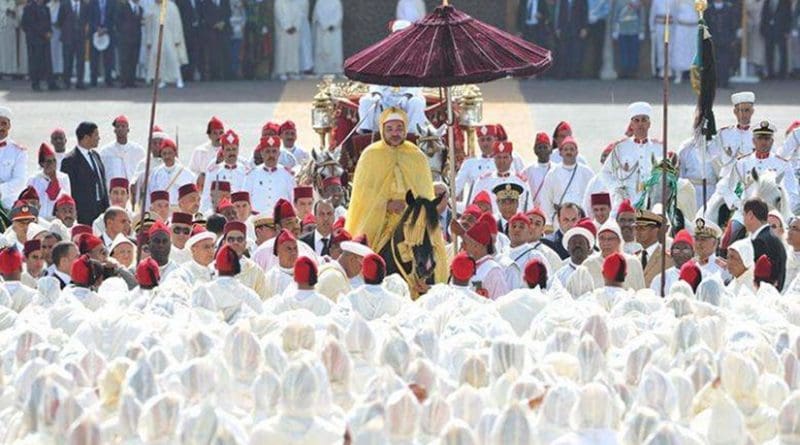Morocco: Model Of Moderate Islam And Intercultural Dialogue – Analysis
Since the advent of the unfortunate events of 9/11 in New York in 2001, Islam has, duly, become an easy target for Western attacks and, as a result, Islamophobia has increased in intensity and scope and has, consequently, even turned into a kind of religion for Muslim-haters, especially those who believe, wrongly, that Islam is an insidious force and subliminal belief of hate, destruction and backwardness.
As such, today, regrettably, Islam is equated with violence, with hatred, with terrorism, with death etc., bearing in mind that those so-called Muslims who opted for extremism, for political reasons and gains, are a handful and their motives are very suspicious, secretive and totally criminal.
Indeed, such dangerous and lethal groups like: al-Qaeda, ISIS, and associated dormant cells and lone wolves, etc. can in no way represent 1.5 billion peace-loving Muslims around the globe and speak in their name, at all. But, alas, these inhuman and violent so-called Muslims have triggered much hatred in the West towards Islam, in general. Indeed, Trump, as a US presidential candidate, vilified Muslims, at will, and as a president he signed the so-called Muslim ban, barring the citizens of some Muslim countries from entering the US.
Violence Inflected On Muslims
If today Islam is seen as violent religion, which is, anyway, a gross stereotype, the West is, somehow, ignoring the violence it has inflected, directly or indirectly, on Muslims for ages, on end, which somehow explains the current rage and hatred of political Islam theorists, activists and followers for western civilization:
- The violence of the Crusades (1095-1291);
- The violence of the colonization (1800-1970);
- The violence of The Balfour Act ( 1917) and the loss of Palestine (1945-48);
- The violence of the abolition of the Ottoman Caliphate (1923);
- The violence of World War II (1939-1945): Muslims used as cannon fodder in front lines in Europe;
- The violence of the Yugoslav Wars (1991-1999/2001) and the Bosnian Genocide (1995);
- The violence of the Iraq War (2003-2011); and
- The violence of Islamophobia (1950-present time).
As of today, there is so much bad blood between Islam and the West and there is an urgent need for real interfaith dialogue, principled and objective-driven between the Judeo-Christian and Muslim cultures.
This dialogue must, ideally, take the following path:
- Phase One: Inter-cultural dialogue;
- Phase Two: Inter-religious dialogue;
- Phase Three: Stereotype-bashing in culture and education;
- Phase Four: Conception of a long term strategy for understanding, exchange and cooperation;
- Phase Five: Implementation; and
- Phase Six: Continuous evaluation.
Traditionally interfaith dialogue gathered men of religion and some junior political decision-makers and their deliberations became recommendations that were never implemented, as a matter of fact. As of now, interfaith dialogue must be dynamic and out-reaching to be able to percolate down to the concerned decision-makers and especially the masses.
Morocco, as a matter of fact, stands today as a good example of an Islam open on other cultures and creeds. A country where tolerance is part of the genetic code of the population and the acceptance of the other in his otherness be it linguistic, cultural or religious is a way of life.
Morocco, Model Of True Islam
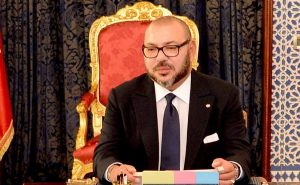
Today, Morocco is a good example of interfaith dialogue: the monarchy is 13 centuries old and is driven by the concept of imarat al-mu’minin or “Commandership of the Faithful, ” whereby the king is the guarantor and the protector of all religions on equal footing. Jews, indeed, have lived in Morocco in total peace since the year 70 A.D when they arrived in the country after being persecuted in Palestine by the Romans.
Since becoming a monarch in 1999, King Mohammed VI has opted for interfaith dialogue and the fight against religious extremism in all its forms and manifestations. He, duly, set up the Imam Academy to train moderate Imams and Morchidine and Morchidate (men and women clerics) for Morocco and the rest of the world; chairs, during Ramadan, the Hassanian Lectures (religious lectures given by Muslim scholars from all over the world) spreading a message of peace, religious coexistence and dialogue with other creeds and beliefs. He, also, founded an African Ulema (religious scholar) organization in 2015 (Mohammed VI Foundation for African Muslim Scholars) with the aim to fight religious extremism and promote inter-religious dialogue and teachings of wasatiyya (Islamic religious moderation.)
Islam In Morocco, A Religion Of Acceptance, Tolerance, Dialogue And Coexistence
Morocco is a land of tolerance, acceptance and coexistence. King Hassan II has described it as a tree whose roots are in Africa, its trunk in Morocco, its side branches in the Middle East and its top foliage in Europe.
Sitting on the crossroad of so many cultures, religions and civilizations, Morocco has become through the centuries a haven for countless cultures, ethnicities and ways of life.
So, for many millennia and still today, Morocco accepts people of different backgrounds and creeds. With time, Moroccans have acquired the disposition of welcoming the “other,” no matter how complex his difference might be and how alien his “otherness.”
Moroccans are, by nature, friendly, open, and tolerant of other people. Their most important quality, by far, is their ability to welcome in other life experiences and adapt them to their lives.
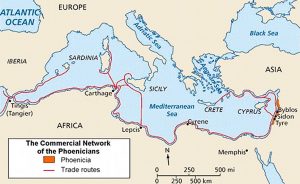
As such, they have interacted positively with Phoenicians, Carthaginians, and Romans among others races, in beneficial exchanges; one still witnesses, today, vestiges of these in the language, customs and beliefs, not to mention, the remains of entire cities such as Volubilis, Lixus, Sala Colonia and Mogador.
Until their massive migration to Israel on the aftermath of the creation of this state in 1948, Jews lived all over the country in villages, towns and cities, engaging in commerce, trade and finance. Because of their wide experience in international trade, Moroccan Sultans appointed them as their financial and commercial agents (tujjar sultan).
An example of the good interfaith dialogue in Morocco can be witnessed in the city of Sefrou, situated thirty kilometers south of Fes. In Sefrou, Muslims and Jews lived side by side in harmony for centuries, and often practiced their religious rituals in such unison with each other that it was difficult to tell what was Islamic and what was Jewish.
They even venerated the same man, whom many considered a saint, buried in a grotto in a neighboring mountain. The site was tactfully called Kaf al-moumen (the grotto of the faithful) because it was a religious sanctuary for both Muslims and Jews, and times for worshiping in this area were equally divided, the year around.
Somewhat, the Amazigh/Berbers and Jews of this mythical city and capital of religious coexistence are the forfathers of the Judeo-Amazigh/Berber cultural substratum of Moroccan tolerance.
The example of Sefrou is not unique; it is found in other places such as Debdou, Azrou, Fes, Rabat, Meknes, and Marrakesh, among others. Communities of Jews lived and practiced their faith in all these places in complete peace and harmony. They were, in principle, full Moroccans, and as such enjoyed the full rights and obligations of their Muslim brethren.
In what regards such aspects of tolerance and coexistence Hind Al-Subai Al-Idrisi writes in Qantara:
“Morocco is considered one of the most stable countries of the region, with more or less peaceful co-existence between the various religions and cultures that make up the Moroccan social fabric. As a testament to this, the city of Fez, classified by UNESCO as part of the global human heritage, held a significant event on 13 February 2013: the inauguration of the newly renovated Fez Prayer Synagogue.
The celebration was headed by Morocco’s prime minister and leader of the Justice and Development Party, Abdelilah Benkirane. He pointed out that: “The event underscores the identity of Morocco as a land for peace, tolerance and peaceful co-existence between followers of all divine religions and is a lesson for the 21st century, which Morocco sends to all the world.”
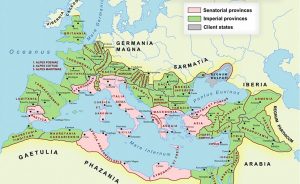
During the Second World War, when the Germans occupied France, the collaborationist Vichy government wanted to persecute Moroccan Jews. The late King Mohammed V resisted the order and called for the persecution of all Moroccans, if this were to happen, on the grounds that the Jews are no different from his other subjects, for whose safety he was fully responsible as a monarch and mostly as “Commander of the Faithful”.
At the turn of the twentieth century, Morocco was subjected to European colonialism and was divided up between France and Spain. More than 44 years of this Protectorate regime left a lasting and vivid imprint on the language, culture and way of life of Moroccans and French and Spanish cultures are, as such, part and parcel of the Moroccan way of life which the locals espouse with much openness and delight.
Today, Moroccans proudly highlight their multiple and composite identity: Amazigh, Arab, Islamic, Jewish, African, Andalusian and Mediterranean — and their age-old openness and acceptance of multiculturalism and diversity is inscribed in gold in their most recent constitution (2011):
“A sovereign Muslim State, attached to its national unity and to its territorial integrity, the Kingdom of Morocco intends to preserve, in its plentitude and its diversity, its one and indivisible national identity. Its unity, is forged by the convergence of its Arab-Islamist, Berber [amazighe] and Saharan-Hassanic [saharo-hassanie] components, nourished and enriched by its African, Andalusian, Hebraic and Mediterranean influences [affluents]. The preeminence accorded to the Muslim religion in the national reference is consistent with [va de pair] the attachment of the Moroccan people to the values of openness, of moderation, of tolerance and of dialog for mutual understanding between all the cultures and the civilizations of the world”
The Moroccan “Commandership Of The Faithful”
The Moroccan monarchy is one of the oldest in the world, dating back to the Idrisid dynasty (788–974) and has continuously striven to strike a balance between different religious currents, social tendencies and economic interests. The task has always been difficult, if not impossible. Still, one must acknowledge that the political system has undoubtedly been quite successful in keeping the country united and inclusive.
Monarch’s religious clout
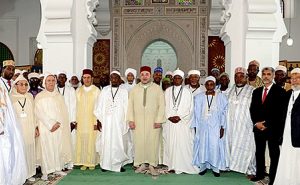
The monarch in Morocco is the head of the state, but, most importantly, he is “the Commander of the Faithful;” amir al-mu’minin, a religious office that gives him a quasi-sacrosanct status. Ordinary people would often criticize his political acts, his worldly decisions in running the affairs of the country, but, hardly, his religious clout, leadership or actions. Interestingly enough, his religious status is, even, recognized in many countries in West Africa, that acknowledge his religious title of “Commander of the Faithful,” especially among the Tidjane communities in the Western parts of the continent.
In the 19th century, Morocco was, de facto, divided into two political territories, but it was still one country paradoxically. There was bled al-Makhzen, land under total control of the central government, and bled as-siba, land of dissidence, made generally of mountains inhabited by the Amazigh/Berbers, who recognized the religious authority of the sultan but not his political role and,as such, they, often, refused to pay taxes to him. But, in spite of this quiet and muted rebellion of the Amazigh/Berbers against the sultan, his religious clout remained intact. The inhabitants of the mountains made Friday prayers and the ensuing sermon, khutba, in his name.
Because of the importance of the religious field, the Ministry of Awqaf and Religious Affairs was, always, located in the Mechouar (palace’s precinct) so that the monarch could walk to the ministry whenever he deemed it necessary, in order to oversee the management of religious affairs of the country.
During the reign of Hassan II (1961-1999), a very conservative monarch, he made it a rule to always start and end his speeches to the nation with verses, surats, of the Koran and intersperse them with sayings of the Prophet Muhammad, hadiths, which gave his words a kind of sacredness, even though most people did not understand such speeches because they were delivered in classical Arabic and not in darija, the local Arabic idiom.
Islamist frustration in Morocco
Following the Iranian revolution in 1979, and the subsequent rise of political Islam in the Muslim world, Islamists took control of religious matters in most Muslim countries because local political leadership had either secular inclinations or did not consider religion as an important issue of daily life. To give their campaign importance and gain in membership, they, also, invested effort, money and dedication in social affairs, a good example of that is the success of the Ikhwan (Muslim Brotherhood) in Egypt, in assisting poor people with education, health and living expenses.
In Morocco, the Islamists were frustrated by the time-old predominant role of the conservative monarchy in religious affairs, epitomized by the yearly act of allegiance, bey’a, presented by officials to the “Commander of the Faithful” on the day of his accession to the throne, to give his office a religious blessing and express to his sacred person a form of religious obedience. As a result, militant Islamists, expressed their willingness to change the course of things by indulging in violence in the Casablanca bombings of May 3, 2003, leading to the death of 47 innocent people. Their aim was to destabilize the state and the monarchy and push the rank and file to rally their cause but it is the contrary that occurred. The population expressed allegiance to the monarchy wholeheartedly, a timeless symbol of Moroccan stability and law and order. This dramatic event served as a wakeup call to King Mohammed VI to review his management of the religious faith in Morocco.
Proactive Management Of The Religious Field
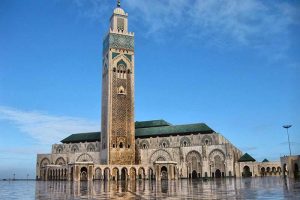
As a follow up to this dramatic event, King Mohammed VI launched on May 18, 2005 the National Human Development Initiative (Initiative Nationale pour le Développement Humain (INDH)), a national solidarity project aimed at empowering the needy and alleviating poverty, to frustrate further the master religious extremists who recruit their Islamist cannon fodder and future terrorists among the poor, as what happened in 2003 in Casablanca and was immmortalized in the excellent film of Nabil Ayouch entitled, “Horses of God.”
However, the most important achievement in the present monarch’s progressive management of faith issues is the opening, on March 27, 2015, of Mohammed VI Institute for the Training of Imams, Morchidines and Morchidates (Institut Mohammed VI pour la formation des Imams, Morchidines et Morchidates) initiated to play a leading role in fighting religious radicalism and religious violent extremism, especially among the lower social class.
This institute, referred to by the general public as “Imam Academy” is, probably, the first organized reaction to the massive fundamentalist tsunami in religious preaching and education. Until now, radical Islam, quite aptly, had the upper hand in religious education, or rather, religious indoctrination, brainwashing the youth in hating anyone standing against their philosophy – especially the West, notorious for its secularism and democracy.
This institute is training Moroccan students, as well as, clergy from countries such as Nigeria, Chad, Guinea, Côte d’Ivoire and France. Soon, students from Tunisia and the Russian Federation will join.
The academy provides a curriculum in religious topics such as Koranic interpretation, exegesis, sayings of the Prophet (Hadith) and his doings (Sunnah), as well as Islamic law (shari’a). It, also, provides education in humanities, mainly: philosophy, psychology and sociology, subjects that are notoriously despised by the Islamists because they stimulate critical thinking.
The duration of the training is a full year for Moroccan students and two years for the others. The French, however, will have to spend three years after which they will be granted a degree to become official Imams in their own country.
Ilan Berman, in an article published in Foreign Affairs, views this experience in rather positive light, as a progressive approach that can be easily grafted on the religious establishments of other countries of the Muslim World:
“For years, the Kingdom of Morocco viewed itself as an exception to the radical political problems of the Middle East—a designation that suggested its experience was both unique and not easily translatable to the outside world. Increasingly, however, Morocco appears to be transitioning into the role of an intellectual model that is both willing and able to take a stand against Salafism and jihadism. In the words of one Moroccan religious official, the kingdom today “sees itself as a natural leader” in the battle of ideas taking place in the Muslim world, on account of its religious credibility and its tolerant teachings.
For the United States, this should come as welcome news. Washington, deeply invested in countering violent extremism in its various forms, would do well to take note of Morocco’s soft-power innovations. It would do even better to leverage them in the global fight against Islamic radicalism.”
Morocco, Model Moderate Muslim Country
Morocco is definitely an Arab-Muslim country but very moderate and very open to the rest of the world. The Monarchy has served for 13 centuries as the symbol of stability by assuming both a temporal role (executive monarchy) and a religious mantle: imarat al-mu’minin (Commandership of the Faithful.) Morocco has sailed successfully through the Arab Spring turmoil because back in 1996, Hassan II launched a very important political initiative for incremental democracy and power-sharing and his successor has maintained this progressive devolution of power.
Positive role in the Arab Israeli conflict
Morocco, because of its millennial relations with Jewry, has developed an understanding for Jewish culture and religion and as such has served successfully in pre-Oslo negotiations, leading to the Oslo I Accord of 1993 and Oslo II Accord of 1995, between the Palestinians and the Israelis, in bringing their views close to each other. Morocco still continues to play the role of mediator in the on-going conflict quietly but surely.
Development of Africa (south-south cooperation)

Since he assumed power in 1999, King Mohammed VI has been very active in the economic development of Africa. He is, all the time, visiting personally African nations offering help and launching with them joint win-win economic programs, that will certainly help these countries develop by having access to Moroccan capital as well as know-how and expertise. Today, Maroc Telecom, major banks and insurances companies, building holdings, etc. are very present in all Africa. Besides, Moroccan universities and higher education institutions welcome thousands of African students, many of whom hold Moroccan scholarships.
Peace-keeping efforts worldwide
Moroccan Blue Helmets are in several parts of the world serving under the banner of the UN to keep peace and give hope to embattled populations. Moroccan army is, also, present in several Gulf states helping with security and has, recently, joined the Saudi-led Arab coalition to hopefully bring peace and stability to Yemen.
Migration policy
Many African migrants have come to Morocco from Africa, over the last three decades, with the hope to go the European El Dorado, but have failed in their efforts, so they found themselves stuck in Morocco with no future prospects and no will to return to their poverty-stricken countries of origin. In view of this human tragedy, Morocco voluntarily greeted the migrants an gave them official residence permits, which will allow them to get work for themselves and education for their children besides other social benefits for their poor families. To date, Morocco is the only Arab country that has a clear and progressive migration policy.
Morocco leading the way towards brotherhood of men and intercultural dialogue
King Mohammed VI has not only succeeded in keeping Morocco safe from the Islamist Tsunami and the ill-fated Arab Spring and its dire consequences, but has, also, aptly initiated a paying strategy to combat radical religious indoctrination, which for the moment is available in Morocco but can be easily copycatted in other countries of the Muslim world.
So, not only Morocco has survived miraculously the Islamist undertow, but it is, also, leading the way toward a more moderate Islam, accepting of other faiths and cultures and respectful of their difference. And it was about time Muslim moderates stood up to extremism in an orderly manner.
So, Morocco is willingly becoming the new Andalusia for multiculturalism, diversity and intercultural dialogue, showing the way for peace and brotherhood of men for the rest of the Muslim world, to build a better world of harmony and togetherness. Amen.
Endnotes:
1. https://www.washingtonpost.com/news/global-opinions/wp/2018/07/03/the-muslim-ban-expands-the-cruel-policy-of-family-separation/?noredirect=on&utm_term=.492eafa93669
2. https://www.moroccoworldnews.com/2017/05/217557/muslims-angry-with-western-world/
3. http://habous.gov.ma/tv/2016/4715-2015-07-20-09-13-59.html
5. https://www.eurasiareview.com/20072018-morocco-land-of-tolerance-togetherness-and-harmony-analysis/
6. Schroeter, Daniel J. 2002. The Sultan’s Jew: Morocco and the Sephardi World. Stanford University Press. 264 pages.
This book challenges accepted views of Muslim-Jewish relations by emphasizing the ambivalence in the relationship. It shows how elite Jews maneuvered themselves into important positions in the Moroccan state by linking themselves to politically powerful Muslims and by establishing key positions in networks of trade. The elite Jews of Morocco were also part of a wider Sephardi world that transcended national boundaries. However, Macnin remained more connected to Morocco, where Jews were, according to Islamic law, protégés of the ruler and still subject to specific legal disabilities. The early-nineteenth-century sultan Mawlay Sulayman confined Jews in a number of Moroccan cities to newly created Jewish quarters as part of a policy of defining boundaries between Muslims and Jews. Yet Macnin remained closely tied to royal power, and in 1822 he became the principal intermediary between Morocco and the European powers for Mawlay Sulayman’s successor, Mawlay ‘Abd al-Rahman.
7. Geertz, C. ; Geertz, H. ; Rosen, L . ; & Hyman, P . 1979. Meaning and order in Moroccan society : three essays in cultural analysis. Cambridge : Cambridge university press.
It is a collective anthropological work that deals with : social identity and points of attachment: approaches to social organization ( Rosen, Lawrence,) Suq: the bazaar economy in Sefrou ( Geertz, Clifford,) the meanings of family ties ( Geertz, Hildred) and a photographic essay by Paul Hayman (510 pages ).
8. Norman A. Stillman, Jewish Social Studies, Vol. 35, No. 3/4 (Jul. – Oct., 1973), pp. 255-263
9. Stillman, . 1988. The language and culture of the Jews of Sefrou, Morocco: an ethnolinguistic study. University of Manchester, – History – 172 pages
10. https://www.africanexponent.com/bpost/5003-is-morocco-a-haven-for-multiculturalism
11. https://en.qantara.de/content/interreligious-dialogue-in-morocco-peaceful-co-existence-between-divine-religions
12. https://www.constituteproject.org/constitution/Morocco_2011.pdf
13. Wainscott, Ann M. « Religious Regulation as Foreign Policy: Morocco’s Islamic Diplomacy in West Africa » in Religion and Politics Section of the American Political Science Association 2017, Volume 11, Issue 1
March 2018 , pp. 1-26
Abstract : Studies of religious regulation tend to examine how states manage the domestic religious market. This article extends this research program by analyzing a state that regulates the religious markets of foreign countries. The Moroccan case demonstrates the circumstances under which a religious bureaucracy designed to manage domestic religion can be turned outward, and employed to achieve foreign policy goals. Unlike other cases of foreign religious regulation, however, Morocco’s efforts have been welcomed at the same time that the policy advanced Morocco’s interests. What explains the success of Morocco’s religious foreign policy? Building on interviews with religious elites from a recipient country, this article argues that Moroccan religious foreign policy has been successful because it was perceived as having historical and cultural legitimacy, it built on pre-existing institutions, and it was paired with renewed economic collaboration, three factors that have broader theoretical relevance to the study of religious foreign policies.
This article appeared in modified form as a chapter in the book: Bureaucratizing Islam: Morocco and the War on Terror. The two publications proceeded simultaneously.
14. http://www.maroc.ma/fr/content/indh
15. http://www.indh.ma/fr/presentation
INDH : Objectifs, valeurs et principes :
L’Initiative Nationale pour le Développement Humain, lancée par Sa Majesté le Roi Mohammed VI, que Dieu L’Assiste, le 18 mai 2005, vise la lutte contre la pauvreté, la précarité et l’exclusion sociale à travers la réalisation de projets d’appui aux infrastructures de base, projets de formation et de renforcement de capacités, d’animation sociale, culturelle et sportive ainsi que la promotion d’activités génératrices de revenus et d’emplois.
De par son originalité et son aspect novateur, l’INDH se fonde sur une nouvelle philosophie et un nouveau style de management. Dans ce cadre, le Discours Royal constitue la feuille de route et la référence se focalisant sur un socle de valeurs à savoir, la dignité humaine, la confiance des marocains en soi et en l’avenir de leur pays et la participation de la population concernée à travers le diagnostic participatif et la déclinaison des besoins exprimés en projets. De plus, la bonne gouvernance et la pérennité s’ajoutent à ces valeurs qui confortent une gouvernance intelligente, démocratique, et qui donne la possibilité à tous les acteurs du développement de s’impliquer fortement dans le processus de prise de décision de la chose publique.
16. http://www.metacritic.com/movie/horses-of-god
Synopsis : Yachine is 10 years old, he lives with his family in the slum of Sidi Moumen in Casablanca. His mother, Yemma, leads the family as best as she can. His father suffers from depression, one of his brothers is in the army, another is almost autistic and the third, Hamid, 13, is the boss of the local neighbourhood and Yachine’s protector. When Hamid is sent to jail, Yachine takes up jobs after jobs, though empty, to get free from the doldrums of violence, misery and drugs. Released from prison, Hamid, now an Islamic fundamentalist, persuades Yachine and his pals to join their “brothers”. The Imam, Abou Zoubeir, their spiritual leader, starts to direct their long-standing physical and mental preparation. One day, he tells them they have been chosen to become martyrs. The film is inspired by the terrorist attacks of May 16th 2003 in Casablanca.
17. http://www.habous.gov.ma/fr/institut-mohammed-vi-pour-la-formation-des-imams,-morchidines-et-morchidatesi.html L’Institut Mohammed VI pour la formation des Imams Morchidines et Morchidates crée par le Dahir Chérifien n°1-14-103 du 20 Rejeb 1435 (20 mai 2014) est dirigé par M. Abdessalam Al Azaâr.
Selon le dahir précité, l’Institut est chargé des missions suivantes:
- la formation des imams et des morchidines et morchidates dans les domaines de l’Imamat et de l’orientation religieuse afin de leur permettre d’acquérir les méthodes et les connaissances les rendant capables d’accomplir les missions qui leur sont dévolues;
- la formation, la mise à niveau et le perfectionnement des préposés religieux étrangers;
- l’organisation de sessions de formation continue dans les domaines de compétence de l’Institut;
- l’organisation de cycles d’études, de colloques et de stages de perfectionnement n faveur des Imams et des morchidines et morchidates;
- la réalisation de travaux de recherche visant à développer les performances des Imams et des morchidines et morchidates;
- l’établissement de relations de partenariat et de coopération avec les institutions et les organismes nationaux et étrangers poursuivant les mêmes objectifs;
- l’élaboration, sur demande, de consultations et d’expertises dans les domaines de compétence de l’institut;
- la publication de travaux de recherche et d’études entrant dans le cadre de ses centres d’intérêts.
18. https://intpolicydigest.org/2017/09/28/on-the-radicalization-of-young-moroccans/
19. https://www.foreignaffairs.com/articles/2016-05-12/moroccos-islamic-exports
20. http://www.moroccoworldnews.com/2013/08/101606/coexistence-of-religions-and-cultures-in-morocco/
21. http://www.gatestoneinstitute.org/4899/morocco-model-for-islam
22. http://www.academia.edu/10090735/Morocco_riding_Arab_jealousy_storms_successfully
23. Cf. The Constitution of the Kingdom of Morocco of 2011.
24. https://www.moroccoworldnews.com/2017/02/207675/king-mohammed-vi-takes-africa-storm/
25. http://medafricatimes.com/5561-ivory-coast-over-700-moroccan-blue-helmets-awarded-un-medal.html
26. https://www.migrationpolicy.org/country-resource/morocco
27. https://intpolicydigest.org/2018/07/27/is-morocco-the-new-andalusia-for-multicultural-diversity/
References:
Agence de Presse Sénégalaise . 2012. “Mali: Pr Babacar Samb — ‘Ce Qui Menace Le Mali Menace Le Sénégal (That Which Threatens Mali, Threatens Senegal).’” www.fr.allafrica.com/stories/201209240996.html (Accessed on September 14, 2015).Google Scholar
Agence Marocaine de Presse . 2015. “Full Text of King Mohammed VI’s Speech on Throne Day.”www.moroccoworldnews.com/2015/07/164318/full-text-of-king-mohammed-vis-speech-on-throne-day (Accessed on October 1, 2017).Google Scholar
Aït Akdim, Youssef. 2014. “Madrasa sans frontiers (Madrasa without Borders).” www.jeuneafrique.com/53893/politique/madrasa-sans-fronti-res (Accessed on October 1, 2017).Google Scholar
Alaoui, Mohamed Chakir. 2014. “Le Maroc Sollicité Par Le Kenya Pour Former Des Imams (Kenya Solicits Morocco to Train Its Imams).” www.fr.le360.ma/societe/le-maroc-sollicite-par-le-kenya-pour-former-des-imams-24453 (Accessed on October 1, 2017).Google Scholar
Ali, Siham. 2013. “Morocco, Mali Sign Religious Affairs Accord.”www.magharebia.com/en_GB/articles/awi/features/2013/11/13/feature-02 (Accessed on February 28, 2014).Google Scholar
Antoun, Richard T. 2006. “Fundamentalism, Bureaucratization, and the State’s Co-Optation of Religion: A Jordanian Case Study.”International Journal of Middle East Studies 38:369–393.Google Scholar
Arbaoui, Larbi. 2016. “Morocco to Train Russian Imams.” www.moroccoworldnews.com/2016/03/182434/182434 (Accessed onOctober 1, 2017).Google Scholar
BBC News . 2016. “Morocco Asks to Rejoin African Union after 32 Years.” www.bbc.com/news/world-africa-36822240 (Accessed onOctober 1, 2017).Google Scholar
Beaty, Thalia, Brant, Kristopher, and Donaldson, Maggy. 2015. “More — Not Less — Religion Needed to Fight Extremism, Imam Director Says.” www.pbs.org/newshour/rundown/extremism-fight (Accessed on September 14, 2015).Google Scholar
Bellin, Eva. 2008. “Review: Faith in Politics: New Trends in the Study of Religion and Politics.” World Politics 60:315–347.CrossRef | Google Scholar
Bettiza, Gregorio. 2013. “Religion and American Foreign Policy in the Context of the Postsecular Turn in World Politics and the Social Sciences.” International Politics Reviews 1:11–26.CrossRef | Google Scholar
Binahdā, Ṭāriq. 2014. “Salafiyyu Mālī Ghāḍibūn Min ‘khaṭir’ taṣdīr Al-Mālikiyya Min Al-Maghrib (Malian Salafis are Angry at the ‘Danger’ of Exporting Malikism from Morocco).” www.hespress.com/orbites/111651.html (Accessed on October 1, 2017).Google Scholar
Calcuttwawala, Zainab. 2016. “Morocco to Build a Large Mosque in Chad, Train Chadian Imams.”www.moroccoworldnews.com/2016/02/179488/morocco-to-build-a-large-mosque-in-chad-train-chadian-imams

